I’m sure you’ve heard about it, if you haven’t experienced it directly; the service assistant explaining all the virtues of spending a small fortune on excess waiver or collision-loss-damage waiver insurance at the collection desk. You will come across unfathomable terminology such as excess waiver, CDW, SCDW, PAI or TP. To add further complexity, different companies may use different terms to describe the same product.
Get to know the most important terminology
Collision Damage Waiver (CDW or LDW in the US) is principally designed to cover damage caused in a collision with another vehicle and not single-vehicle damage. Over time, as budget car rental firms look for savings, the scope of CDW cover has shrunk and new exclusions hide in the small print. Basic CDW cover usually excludes damage to tyres, wheels, wing-mirrors, windows, hubcaps, the undercarriage and roof of car. It also excludes towing costs in the case of breakdown and clutch failure – even if you have only driven a few miles.
Super Collision Damage Waiver (SCDW) is a top-up insurance cover. It fills in the gaps that a standard CDW leaves. It will cover many of the exclusions of CDW and it reduces the excess (sometimes down to zero excess).
It certainly makes sense to have certain types of extra insurance cover since the excess levied after an accident, or if your car is damaged, can run into hundreds or even thousands of pounds. Taking out additional cover gives you added peace of mind from the financial risk if or when things go wrong.
These top-up policies are designed to refund excess CDW and theft protection (TP) charges levied by the car rental company.
This extra cover can add hundreds to the hire cost if you buy at the rental collection point. The good news is that you should be able to buy much cheaper standalone excess insurance from a separate insurer before you go.
If you are renting a car for a week or more normally it is cheaper to buy a separate annual excess recovery policy from an insurance broker: moneymaxim.co.uk offers a comparison chart of cover limits.
When it comes to taking out the extra cover, there are three options to choose.
ONE: ignore SCDW cover and buy (as already mentioned) a standalone insurance policy from a third party (Excess Reimbursement) insurer. This is my recommended option.
Advantage: Normally much cheaper. A stand-alone excess recovery policy costs around £40 a year for rentals in Europe which compares very favourably with top-up cover bought from the supplier’s rental counter, which can be as high as £15 a day.
Disadvantage: Need to resist the potential hard sale to buy extra insurance upon collection of the car; if there is damage, you will have to pay for it first and then claim the money back; to be reimbursed you must obtain an estimate of the cost of repair from the supplier – often difficult to extract – and lodge a claim with the insurer in the usual way.
TWO: Buy the extra insurance cover from the broker when you book. My advice – never choose this option.
Advantage: Other than it might be cheaper than being upsold when you arrive, and it’s more convenient when booking, there isn’t a clear advantage of this option. A standalone separate insurance invariably works out the cheapest.
Disadvantage: Normally a lot more expensive than buying standalone cover; likely to still face pressure to upgrade by the rental agency when you arrive at the destination; cover bought at the time of reserving the car is often provided by an insurer in the UK and not by the car rental agency in the destination – so the supplier will still need a deposit on a credit card (if you buy its own top-up waiver no deposit should be necessary); if you incur damage to the car you have to pay first and claim after.
THREE: buy extra cover from the agency renting you the car during collection. This is often referred to as a Super Collision Damage Waiver (SCDW) and can be very expensive if you want to be sure you will not have to pay for any damage.
Advantage: You have peace of mind knowing that you are covered for damages without having to pay first and go through the process of claiming back through your standalone or broker insurance company; you don’t get hassled from the service assistants because you’ve already upgraded with them.
Disadvantage: It will (most likely) cost quite a bit more.
Note of warning: You will be forced to take this option if you (a) don’t have a credit card, or enough credit on your credit card to pay their deposit “lock-in” fee to cover any potential damages, (b) they might claim your credit card has been declined and if you don’t have another one or two other backup credit cards at your disposal (this can be a broker scam at work).
It can be so easy to be taken advantage of when you are tired, it’s late, dark, and you just want to get your vehicle and drive to your destination as quickly as possible, so be prepared.

Further note of warning: The assistant may suggest a number of possible additional insurances to add, so only choose those you really need.
If you choose my recommended option, here is a list of companies that you can get standalone insurance quotes from.
Leisure Guard Insurance (including a MMS special 10% discount when you quote Money10 using this link)
icarhireinsurance.com
Note when buying standalone cover:
Exclusions can hide in the small print, so check the policy carefully – insurance4carhire.com, worldwideinsure.com and icarhireinsurance.com are among specialists with a good reputation.
When taking out extra insurance cover, check that it includes tyres and windscreen. These are the most common reasons for an insurance claims so are worth being covered for.
Make sure it is in the same name as the lead driver on the rental voucher otherwise it may not pay out.
If you’re only hiring for a short period, a daily excess insurance policy should be the cheapest option. For longer car hire, or if you rent more than once a year it should be cheaper with an annual policy.
What if you choose not to take out any extra insurance cover?
If you do this, you are taking on the risk of paying out in the event of an accident, theft or damage made to the vehicle. As mentioned earlier, as a consumer you will be liable to pay a costly “excess”, that can be up to £1,500 and more.
You need to have enough capacity on your credit card to stand a hefty deposit, and maybe another back-up credit card. Debit cards are not usually accepted because they have no pre-authorisation facility to ring-fence funds to cover damage.
Somewhat foolishly I’ve taken this high risk “no extra insurance” approach many times, but I only did it because I regularly rented at the same destination to visit my son and knew the process, where I was driving, and felt confident and happy to take the risk. Knowing what I know now, I won’t be doing it again!
If you do take the risk and damage occurs, the rental company deducts the estimated cost from the deposit held against you when you collected the vehicle (£1000 plus is quite normal). There is usually a standard charge per scratch or ding.


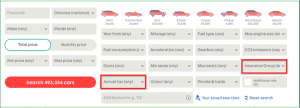

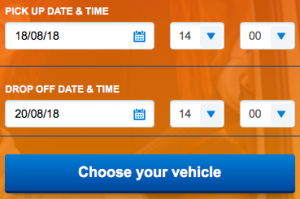
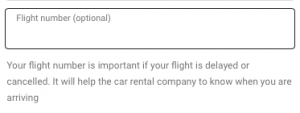 Input your flight number if you know it, that way it helps the car rental company know when you are arriving if there is a delay. If you don’t add it to your booking and your flight is delayed by more than one hour at departure, you must let the rental office know otherwise your reservation may be cancelled, as cars are only held for two hours at busy times.
Input your flight number if you know it, that way it helps the car rental company know when you are arriving if there is a delay. If you don’t add it to your booking and your flight is delayed by more than one hour at departure, you must let the rental office know otherwise your reservation may be cancelled, as cars are only held for two hours at busy times.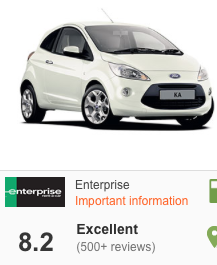 Next, a great tip – go direct to the rental company that you have chosen from the broker search and compare the prices, eg enterprise.co.uk. You may find that going direct is cheaper!
Next, a great tip – go direct to the rental company that you have chosen from the broker search and compare the prices, eg enterprise.co.uk. You may find that going direct is cheaper!


 No reputable rental company should ask you to pay for an upgrade if it can’t provide the vehicle model you have booked.
No reputable rental company should ask you to pay for an upgrade if it can’t provide the vehicle model you have booked. If you plan to drop the car off at a different location to where you collected it, check the fees for doing this.
If you plan to drop the car off at a different location to where you collected it, check the fees for doing this.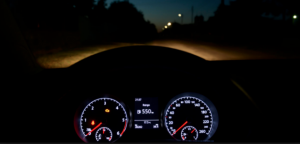 When you are planning your holiday and car rental, it might be worth thinking about choosing an appropriate flight arrival time that works best for picking up a rental care – I realise that might not be possible depending on where you fly to. The point is, picking up a rental car in the dark is far from ideal, not only making inspection of the car difficult, but driving in an unfamiliar car in an unfamiliar place in the dark and on the opposite side of the road can be a challenging experience. It’s probably not the greatest way to begin your holiday.
When you are planning your holiday and car rental, it might be worth thinking about choosing an appropriate flight arrival time that works best for picking up a rental care – I realise that might not be possible depending on where you fly to. The point is, picking up a rental car in the dark is far from ideal, not only making inspection of the car difficult, but driving in an unfamiliar car in an unfamiliar place in the dark and on the opposite side of the road can be a challenging experience. It’s probably not the greatest way to begin your holiday.

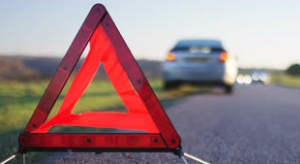 Check you have the necessary cover and a contact telephone number in case of accident or emergency. It is wise to also check that the glove compartment contains all relevant breakdown assistance information.
Check you have the necessary cover and a contact telephone number in case of accident or emergency. It is wise to also check that the glove compartment contains all relevant breakdown assistance information. If you have been asked to return your hire car with a full tank of petrol, you will need to fill it up as close to the airport as possible.So as you drive away from the airport, see if you can spot a conveniently located garage you can stop at when you come back.
If you have been asked to return your hire car with a full tank of petrol, you will need to fill it up as close to the airport as possible.So as you drive away from the airport, see if you can spot a conveniently located garage you can stop at when you come back. You may well encounter toll roads on your drive, so make sure you are prepared to pay the necessary amount.
You may well encounter toll roads on your drive, so make sure you are prepared to pay the necessary amount.
 Prior to leaving on holiday, gather all necessary paperwork and documentation to take with you. Print off what is required and check the
Prior to leaving on holiday, gather all necessary paperwork and documentation to take with you. Print off what is required and check the